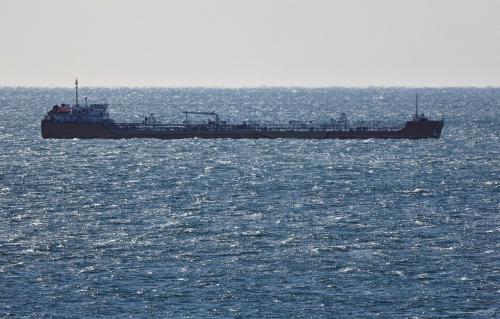Latin America contains some of the world’s largest reserves of oil, and key states supply an important part of the global oil market. Crude oil prices have fallen dramatically over the past two years—from over $100 per barrel to less than $30. That has focused attention on the hardest-hit large producers, such as Colombia, Ecuador, Mexico, and Venezuela, where the economic, social, and even political consequences are most dramatic.
But the reality is more mixed. Some large energy importers will undoubtedly benefit, and some large producers are in deep trouble. But for many oil producers, a combination of a diversified economy (and in some cases hedging mechanisms) will limit the damage for 2015 and 2016. It is only Venezuela—where oil rents dominate the economy, poor policy choices have proliferated, and the national oil company PDVSA has been mismanaged—that low oil prices have proved to be a catastrophe.
Three things to keep in mind as we assess the impact of low oil prices in the region are:
- The role of energy, and specifically oil, in the economy of Latin American states;
- The mechanisms available to states to hedge against the decline in oil prices; and
- The impact of low oil prices on Latin America’s oil companies.
Oil’s varying impact
The region contains some of the most energy import-dependent economies and some of its most oil rent-dependent governments in the world. One way to think about the role of energy is to consider the role of imports in a given state’s total energy use. The following table is based on World Bank statistics for the percentage of each state’s energy use that was provided by imports in 2012 (states missing from the list are either net energy exporters or provided no data to the Bank for that year).
Net Energy Imports as a % of Total Energy Use in Key States in the Americas (2012)
| Country | Percentage |
| Jamaica | 82 |
| Panama | 78 |
| Chile | 65 |
| Uruguay | 60 |
| Honduras | 52 |
| Cuba | 52 |
| El Salvador | 47 |
| Nicaragua | 44 |
| Guatemala | 26 |
| Haiti | 18 |
| United States | 16 |
| Brazil | 11 |
| Argentina | 6 |
For countries such as the United States, a major oil producer, or Argentina, which had hoped to increase its oil production, low oil prices are a mixed blessing: They hurt domestic oil producers, but benefit major domestic energy consumers. Members of Petrocaribe such as El Salvador, Jamaica, and Nicaragua will experience fewer gains since they already benefited from subsidized financing for oil purchased from Venezuela, but they will at least accumulate debt at a slower pace. However, for major energy importers such as Chile, Panama, and Uruguay, low oil prices should be beneficial.
The second element to consider is the role of oil rents in the region’s economies. The following table draws on World Bank statistics to rank states in the Americas in terms of the percentage of their economies that is based on oil rents (oil income minus costs of production) in 2012.
Oil Rents as a % of GDP in the Americas (2012)
| Country | Percentage |
| Venezuela | 23.8 |
| Ecuador | 17.5 |
| Trinidad and Tobago | 15.7 |
| Suriname | 9.6 |
| Colombia | 7.8 |
| Mexico | 6.8 |
| Belize | 6.3 |
| Bolivia | 5.8 |
| Canada | 4.1 |
| Argentina | 2.8 |
| Brazil | 2.5 |
| Cuba | 2.2 |
| Peru | 1.7 |
| United States | 0.9 |
As we can see from this table, some oil producers (Venezuela, Ecuador, and Trinidad and Tobago) are highly exposed to the effect of low oil prices because their GDP depends so significantly on oil rents. Other significant producers (Mexico and Colombia), are still affected by declining oil prices, but impact on GDP is more limited because oil production is only one component of a more diversified economy.
Can you hedge against low prices?
In the face of the long-term, secular decline in the price of oil, what can oil producing states do to hedge against sustained low oil prices? Most of the region’s oil production is sold via long-term contracts, but pricing is generally set by the spot market, or alternatively around a basket of spot market prices (which vary across products). So contracts do not generally protect oil producers from the impact of low prices. Since oil purchases are paid 90 days in arrears, January’s particularly low crude oil prices will not have full impact on the cash flow of the region’s major producers until April. These prices are so low that they will hit not only Venezuela hard, but also countries with more diversified economies: Mexico and Colombia.
In the past, a number of oil producers in the Americas have experimented with sovereign wealth funds to save excess rents from commodity booms, with Chile’s (based on copper export revenues) being the best known example. For oil, Mexico and Colombia both put in place sovereign wealth funds, but they are not of a scale or size to have a significant impact on buffering against the effect of declining oil prices. Venezuela implemented a macroeconomic stabilization fund in the late 1990s to save part of its oil revenues during periods of high prices. By some accounts, it would now have hundreds of billions of dollars in accumulated wealth today if the Chávez administration had operated the fund according to its founding principles. Instead, the excess income was largely spent on supporting vast increases in government spending and domestic consumption.
Mexico has historically used international financial markets to insure against low oil prices. In collaboration with Mexico’s central bank, the Secretariat of Finance and Public Credit uses a financial hedge each year to lock in state tax revenues at a minimum oil price for the subsequent year. For example, it bought put options for oil at $76.40 for 2015 at the cost of $773 million. However, now that oil prices have crashed and look to remain low in the medium term, repeating such an operation becomes increasingly expensive looking forward, and it is thus of less benefit as a hedge.
Ultimately, oil producing states in the region will have to resort to a mix of budget cuts and borrowing on international capital markets to address the impact of low crude prices. Colombia and Mexico, although both are significantly affected by low oil prices, have some ability to borrow from abroad to fund budget deficits. Ecuador, which had been cut off from international capital markets since its default eight years ago, has been able to return to the markets and secure financing because the government is not overly indebted and the macroeconomic picture has so far been relatively stable. Only Venezuela, which spent every cent from a spectacular decade-long oil boom and ended up heavily indebted, is unable to resort to traditional forms of international financing since it is considered too risky by many investors. Even China, which has lent about $50 billion to Venezuela in the past eight years, is attaching more conditions to a promised fresh injection of $6.5 billion in 2016, demanding that new funding be spent on increasing oil production and on new mining projects.
For oil companies, a long road ahead
Low oil prices will have a very significant impact on the corporations that engage in the exploration and production of oil in the Americas. Some producers are highly leveraged, due to loans taken out to expand production during the commodity boom. This is a problem both for heavily indebted state oil companies in Venezuela and Mexico and for private oil companies in the United States and in the region. Even in cases where it may not be profitable to produce oil due to high production costs, such as in Ecuador, producers have to continue pumping to generate cash. On the other hand, countries hosting major refinery operations have benefited in the short term as prices for refined products have fallen more slowly than that for crude oil. In the long term, prices for refined products are likely to fall as well, putting financial pressure on companies engaged in downstream operations.
Even in countries that are not heavily dependent on oil rents, national oil producers are major players in the local economy, both in terms of the stock markets and in the real economy through contracts to local suppliers. Brazil’s Petrobras, thanks to recent corruption scandals and low global oil prices, went from a $350 billion market cap in 2011 to $20 billion today. Colombia’s Ecopetrol fell from a market cap of $64 billion in 2012 to a little over $6 billion today. The sharp falloff in market cap not only has an impact on investors, but it also makes it more difficult for these companies to raise new money through stock sales to fund (among other things) needed capital expenditures. For example, Petrobras has had to greatly reduce planned investment, and this has had a chilling effect on economic activity throughout the economy. And reduced capital investment today means constrained oil production capacity in the future.
Conclusions
So when thinking about the impact of low oil prices on the Americas, there are three categories of states to consider:
- Oil rent-dependent states that, due to poor policy choices, are unable to hedge effectively against low oil prices, principally Venezuela. Here the economic (and political) consequences will be severe and are on the brink of producing a humanitarian crisis.
- Oil producers that are able to at least partially hedge against low oil prices, such as Brazil, Colombia, Ecuador, and Mexico. These countries have financial tools that enable them to mitigate the full impact of declining oil prices. However, they will experience slower growth or even recession, but they will likely avoid major economic catastrophe. However, it may take years for their domestic oil companies, especially those focused on upstream operations, to recover from shrunken market valuations, reduced income, and low capital expenditures.
- Oil importers that benefit from low energy prices. Some of these states may even use this as an opportunity to correct some poor energy policy choices. For example, Argentina has subsidized domestic energy consumption, and it could now taper off this support relatively painlessly. Other countries that have been highly dependent on external subsidies, such as Petrocaribe member states, now have an opportunity to put in place new energy strategies that make them less vulnerable to external influence from Venezuela.
The Brookings Institution is committed to quality, independence, and impact.
We are supported by a diverse array of funders. In line with our values and policies, each Brookings publication represents the sole views of its author(s).




Commentary
Three things to know about the impact of low oil prices on Latin America
February 17, 2016